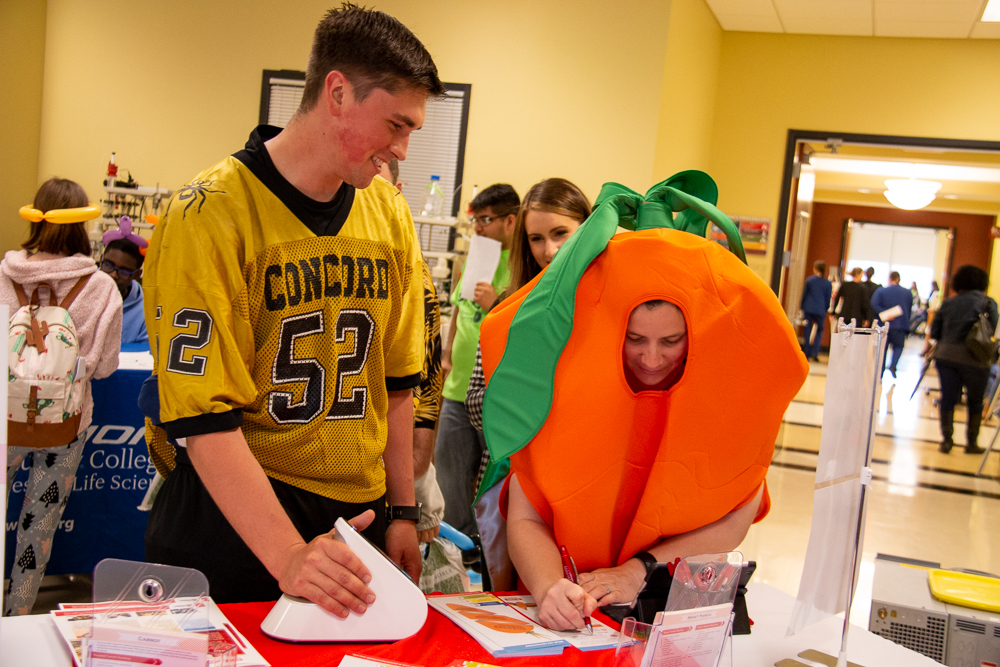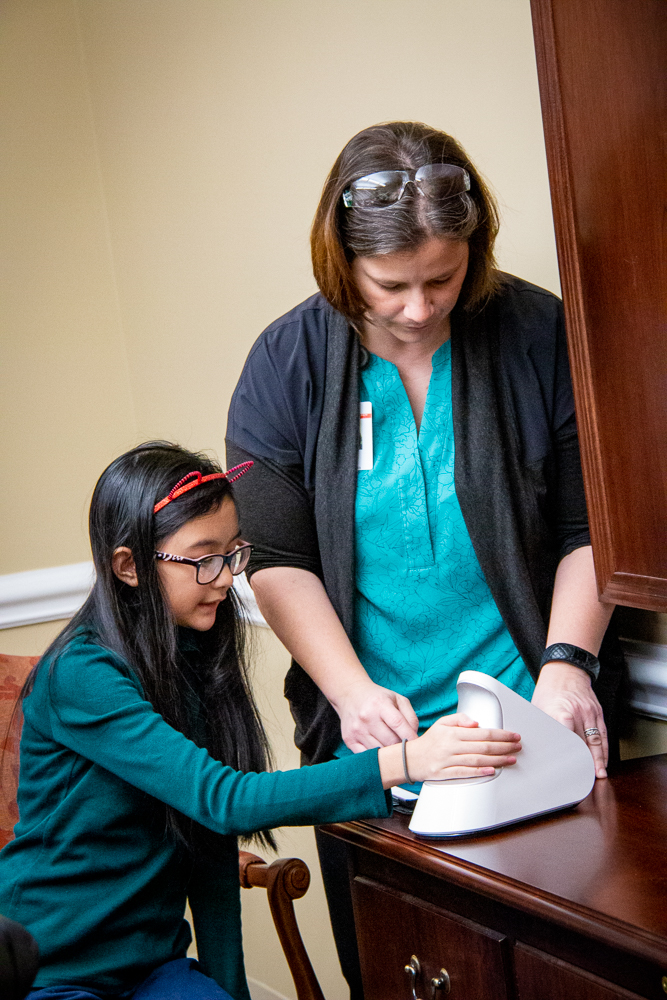A Prescription for Fruits and Veggies
Imagine leaving a doctor’s appointment with a new prescription in hand, but instead of heading to the pharmacy, you go to the grocery store. Instead of getting just pills, you get produce, too.
The idea might not be as far-fetched as you may imagine.
This is the future that Cheri Granillo envisions. As the Translational Nutrition Program Manager at N.C. State’s Plants for Human Health Institute, she seeks to transform the institute’s cutting-edge research into practical applications that can improve consumer health with fruits and vegetables.

Granillo brings a unique skillset to her role. A graduate of NC State University and the Johns Hopkins University School of Nursing, she’s spent 14 years as a primary care provider, mostly working in underserved communities in southern New Mexico. In 2018, she moved back to North Carolina, accepting her current role with PHHI Extension; in part because she was feeling burnout and frustration with her patients’ interest in fixing their health with a pill, without considering the lifestyle choices that could improve their health.
But she didn’t want to stop serving patients or lose her connection to the medical field, so one day a week, she wears her stethoscope and keeps her nurse practitioner skills sharp working at HealthReach Community Clinic in Mooresville. By combining her interest in food science research with her love of patient care, she blends analytical and creative approaches to health. The analytical part of her mind combs the data, while her creative side finds ways to turn it into actionable steps that are suitable for consumers’ lifestyles.
Granillo doesn’t envision a future free of medicine, but one that incorporates fruits and vegetables in a holistic care model. “As providers, we know that it’s healthy to eat more fruits and vegetables, but then there’s a disconnect: the conversation moves onto prescribing this drug or trying that therapy or seeing this specialist,” she says.
This is an opportune time to help consumers navigate healthcare, she believes. More than ever, consumers are seeking information about how various diets can impact diseases and chronic conditions. Granillo says that consumers have become savvier, with many understanding that the naturally occurring phytochemicals found in foods offer a tremendous amount of health benefits. While people used to equate “chemicals” with “artificial” and “dangerous,” people are learning that phytochemicals are beneficial, just as they learned 20 years ago that bacteria can be beneficial, too.
Meanwhile, researchers at PHHI are making vital connections between nutrition and health; such as:
- Dr. Colin Kay researches how foods can cause, prevent, or manage diseases
- Dr. Mary Ann Lila’s research into fusing plant compounds with proteins—and hence, creating shelf-stable, high-quality nutrition—has caught the attention of NASA and the Bill and Melinda Gates Foundation
- Dr. Giuseppe Valacchi is learning how nutrition may combat the effects of air pollution
“What’s unique about PHHI is that everyone here has a common goal,” Granillo says. “They come at their research from such different angles, and they may not even be thinking about each other’s work. But when I look at that information, it’s fascinating because those pieces can fit together and really help people.”



Granillo connects this research to public health. She finds opportunities to work with doctors, nurses, and the community, teaching them how to incorporate data-driven findings regarding fruits and vegetables into daily practice. One such idea is PhytoRX, a pilot program she spearheaded at HealthReach, with the support of a grant from BlueCross and BlueShield of North Carolina, and partnerships with FeedNC and Iredell County Family and Consumer Science Extension agent, Andrea Sherrill. Providers at HealthReach used PhytoRx to enroll patients in a fruit and vegetable prescription program that encouraged increased incorporation of important phytochemicals into their daily diets. In addition to produce distributed by Feed NC, Sherrill, a registered dietitian, provided video lessons based on the Med Instead of Meds curriculum focusing on small diet changes that can make a big health impact.
“If your patient has skin cancer, for example, then you’ll want to prescribe carotenoids, such as mango and carrots. If your patient is pre-diabetic, the prescription would be for anthocyanins, from foods that are red and purple, like blueberries,” Granillo says. “What I want is for providers to put such things on a prescription pad, telling patients which phytochemicals they need in their diets. Research has shown that patients listen and do things that providers tell them to do, even things that they wouldn’t do if a mom or friend told them.”
For Granillo, this information can give consumers more control over their health. By learning that what they consume affects how they feel, consumers no longer have to feel as though fate and genetics are solely driving their futures. Giving consumers this information will not only offer a greater sense of empowerment in their healthcare decisions, but it will also transfer what researchers learn in high-tech labs to what we put on our plates.
- Categories: